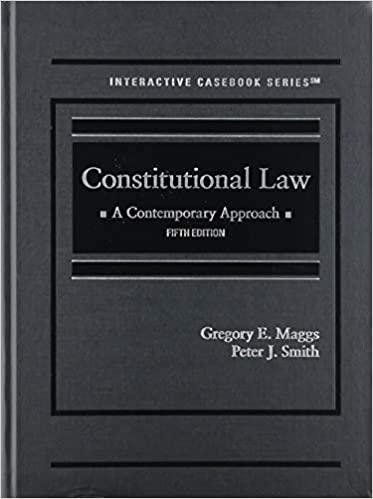Question
With some relatively limited exceptions, e.g., the Federal Tort Claims Act, 28 U.S.C. 2671-2680 (which relinquishes the otherwise sovereign immunity of the United States in
With some relatively limited exceptions, e.g., the Federal Tort Claims Act, 28 U.S.C. 2671-2680 (which relinquishes the otherwise sovereign immunity of the United States in certain instances, i.e., thereby allowing U.S. citizens the ability, which they would otherwise not have, to sue the federal government for the negligent acts of its agents (e.g., employees), for instance), grants the ability to sue the Federal Aviation Administration for allegedly negligent air traffic control errors, so here we're talking about a different "sovereign immunity" doctrine than the international law one discussed in Jennings (2018, pp. 232-235) and Emerson (2015, pp. 639-640), as the vast majority of tort law is state law (Emerson, 2015, p. 59), i.e., "[f] or torts, the applicable law is usually the law of the state where the injury occurred," [emphasis in original], as opposed to federal law (as the language of the Federal Tort Claims Act, 28 U.S.C. 2674, effectively adopts state law, with certain specified exceptions, to determine whether or not the U.S. will be liable). However, there are still instances where Congress has acted to impact the way tort law functions. Congress passed under the ostensible belief that there were deficiencies/injustices in how state courts were processing/handling such class actions. The President signed into law the Class Action Fairness Act of 2005, making it easier for defendants to "remove" the action to federal court (i.e., although initially filed by a plaintiff in a state court, the proceedings after that, including any trial, would be conducted by/in a federal district court).
Note: You may wish to review the previous Web Search Activities steps to help locate this. Or, you may want to use Congress.gov, scroll to the bottom of the page, and click on the "Legislation" option under the "Site Content" heading. You then want to scroll down to the "Congress" heading in the column on the left and click on the "Show more" down arrow. Next, since this was passed and signed in 2005, you want to click on the box before "109 (2005-2006)." Finally, you want to scroll back up to the top and type the words "Class Action Fairness Act" in the search box (i.e., "Examples: hr5, sres9, 'health care") and then click on the magnifying glass icon. (Note: You may need to go through a couple of pages before finding the 109thCongress actions.). Find out, and provide the information pertaining to:
- Who introduced this legislation (and when);
- What the introduced bill number was;
- When (and by what vote), it passed the Senate and the House of Representatives;
- When the President signed it; and
- The Public Law Number for this bill/act.
Then find the citation (in the appropriate format) for the U.S.C. segment that describes the procedure/requirements for removing class actions described above.
Step by Step Solution
There are 3 Steps involved in it
Step: 1

Get Instant Access to Expert-Tailored Solutions
See step-by-step solutions with expert insights and AI powered tools for academic success
Step: 2

Step: 3

Ace Your Homework with AI
Get the answers you need in no time with our AI-driven, step-by-step assistance
Get Started


